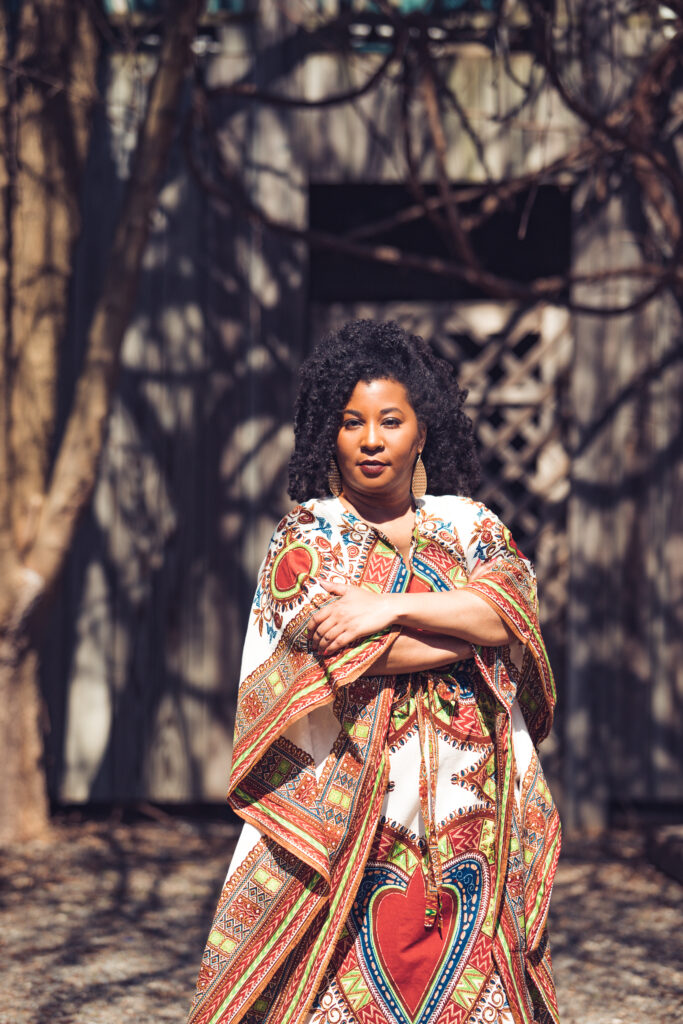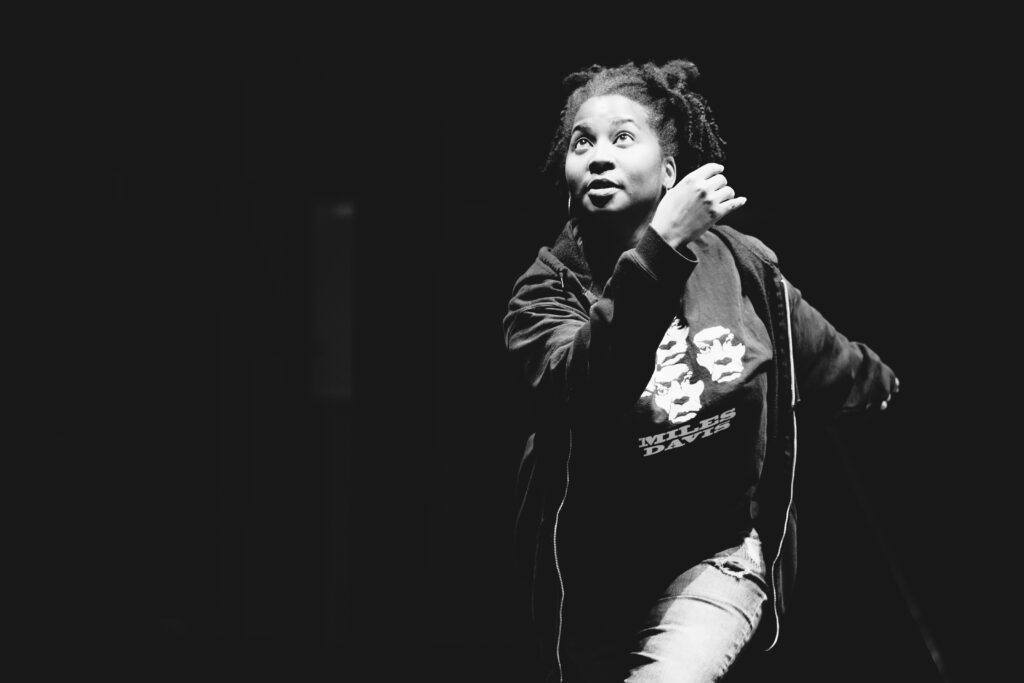
What do Prince, Debbie Allen, Joni Mitchell, and David Bowie have in common? They were all multifaceted artists who inspired Melanie George in her own multi-hyphenate dance career. “I don’t have to necessarily be one single thing; I can be lots of things,” George tells Dance Teacher. “All of it keeps coming back to my love for the arts.”
Jazz dance has been at the heart of George’s work, which has taken her down many different avenues. She is the founding director of Jazz Is…Dance Project, dedicated to honoring jazz dance’s Black American roots and the dissemination of the art form’s education, choreography, performance, and scholarship. She is also the Associate Curator and former Director of Artistic Initiatives at Jacob’s Pillow. As a dramaturg, George has contributed to projects by Raja Feather Kelly, Helen Simoneau, Susan Marshall, Alice Sheppard/Kinetic Light, Machine Dazzle, Urban Bush Women, and pieces such as SW!NG OUT, among others. She was also the former dance program director at American University, and has guest lectured at Harvard University, the David Geffen School of Drama at Yale, and The Juilliard School. This month, she returned to higher education as an assistant professor of dance at Rutgers Mason Gross School of the Arts.
George chatted with Dance Teacher about her teaching philosophy, the importance of prioritizing rest as a dancer and teacher, and the value of jazz music in her movement classes.
What do you love most about everything you do?
The artists that I was inspired by demonstrated multiplicity for me. I identify as a “dance maker,” and I mean that in the sense of everything I do is towards the making of dance. It could be teaching, curating, or dramaturgy; it could be choreography or dance writing. All of it is a form of dance making to me.
What have been your biggest challenges as a dance educator and how have you navigated them?
I think paying bills [laughs]. I’m fine, but I will say it takes real bravery to decide to pursue something when you aren’t sure it’s going to pay your bills. I’ve been very fortunate to have a pretty consistent trajectory out of sheer determination and people seeing something in me that maybe I didn’t see in myself.
Also, the nature of our field was designed to make me doubt myself because of my body type. I think it was a certain degree of self-confidence that helped me get around that, but I also think not letting myself be defined by other people’s definitions of me. It goes back to that multiplicity. I’m all these things. I get to decide.

As a dance educator, what’s the best and worst advice that you’ve received?
I had a job in higher education out of graduate school, and a colleague of mine said, “You should get a sofa for your office because sometimes we sleep here.” What that told me was that it was okay to not prioritize rest and that it was expected in my work. Unfortunately, I took that upon myself and put my health last. So, I would say the worst advice I ever got was to not prioritize my mental, emotional, and physical health. Dancers don’t rest enough; what we do is with our bodies, and if we aren’t rested, everything suffers.
I would say the best advice I got was a counterpoint from that same colleague. I was struggling with some lesson planning and my colleague said to me, “Is it possible you’re overplanning?” And the answer was yes, I was. That was the beginning of a journey towards a philosophy I have around teaching and pedagogy, which is “Do less, go deeper.” I used to be the kind of teacher who thought I had to give my students so much information because I was the container of knowledge. I don’t believe that anymore; I believe that I am a conduit now. As a young teacher, I thought that the way to be a good teacher was to know everything. I learned that wasn’t necessarily good, or efficient, teaching. I needed to step outside of my own ego.
What’s one thing that makes your classes unique?
If you take my class, you are simultaneously getting a jazz music lesson. In some ways, the playlist is as important as what is going on movement-wise. There’s no accidental music choice in my class. I give a lot of thought to it.
Both of my parents were born in the 1930s, so they were young people when jazz was America’s most popular music. I am inextricably tied to the music that was played in my home, and that was jazz of the 1940s, ’50s, and ’60s. When I was maybe 9 or 10, my father held a fundraiser because he was social worker and decided that I would be the entertainment. He wanted me to dance to a song by The Heath Brothers called “A Sassy Samba.” Every time I play that song in my class, it’s a homage to my dad.

Having such a vast knowledge of jazz dance, can you clarify for readers what jazz dance is not?
Jazz dance is a Black American art form that could only have been created here because of the conditions of Black people in postcolonial America as a result of slavery. Jazz comes from the movements and philosophical, spiritual, identity-based elements of Black people. I think the way jazz dance got talked about for a very long time was in the absence of Black people; it was co-opted and others were named fathers and godfathers. That was a history that I was taught, so I know how problematic it is. If you believe that in order to do what you are calling “jazz” that there needs to be a foundation of ballet [for example], I don’t believe that it is jazz because it doesn’t make sense that you need a whole other dance form to be proficient in this dance form. I would say keep referring to the roots [of jazz dance], and if you don’t see any residue of the roots in the movement, maybe call it something else.
What advice do you have for dance educators?
There’s always more to learn.
Editor’s note: This article was updated on October 13, 2023 to note that George is the former Director of Artistic Initiatives at Jacob’s Pillow.





